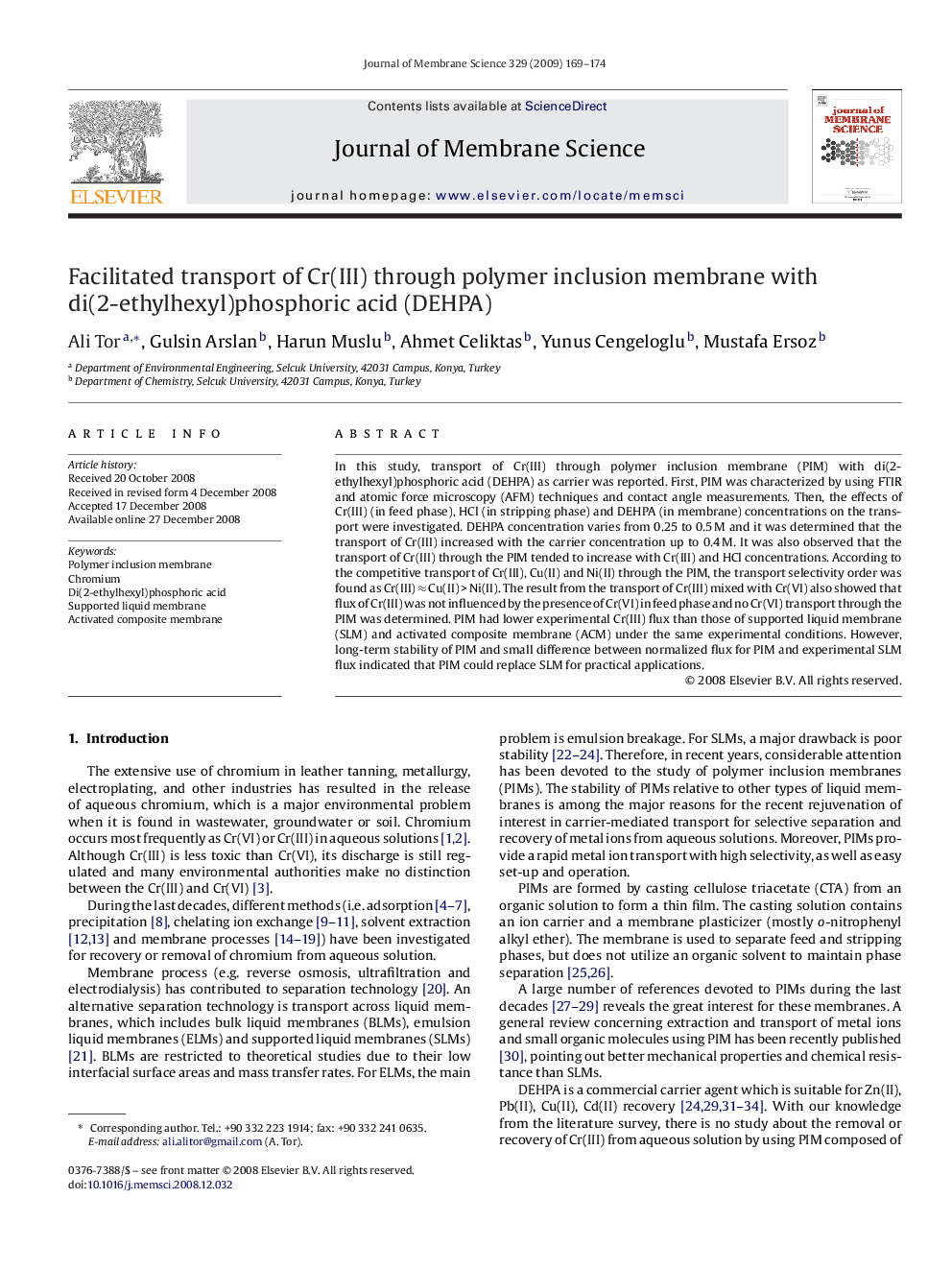| Article ID | Journal | Published Year | Pages | File Type |
|---|---|---|---|---|
| 637366 | Journal of Membrane Science | 2009 | 6 Pages |
In this study, transport of Cr(III) through polymer inclusion membrane (PIM) with di(2-ethylhexyl)phosphoric acid (DEHPA) as carrier was reported. First, PIM was characterized by using FTIR and atomic force microscopy (AFM) techniques and contact angle measurements. Then, the effects of Cr(III) (in feed phase), HCl (in stripping phase) and DEHPA (in membrane) concentrations on the transport were investigated. DEHPA concentration varies from 0.25 to 0.5 M and it was determined that the transport of Cr(III) increased with the carrier concentration up to 0.4 M. It was also observed that the transport of Cr(III) through the PIM tended to increase with Cr(III) and HCl concentrations. According to the competitive transport of Cr(III), Cu(II) and Ni(II) through the PIM, the transport selectivity order was found as Cr(III) ≈ Cu(II) > Ni(II). The result from the transport of Cr(III) mixed with Cr(VI) also showed that flux of Cr(III) was not influenced by the presence of Cr(VI) in feed phase and no Cr(VI) transport through the PIM was determined. PIM had lower experimental Cr(III) flux than those of supported liquid membrane (SLM) and activated composite membrane (ACM) under the same experimental conditions. However, long-term stability of PIM and small difference between normalized flux for PIM and experimental SLM flux indicated that PIM could replace SLM for practical applications.
